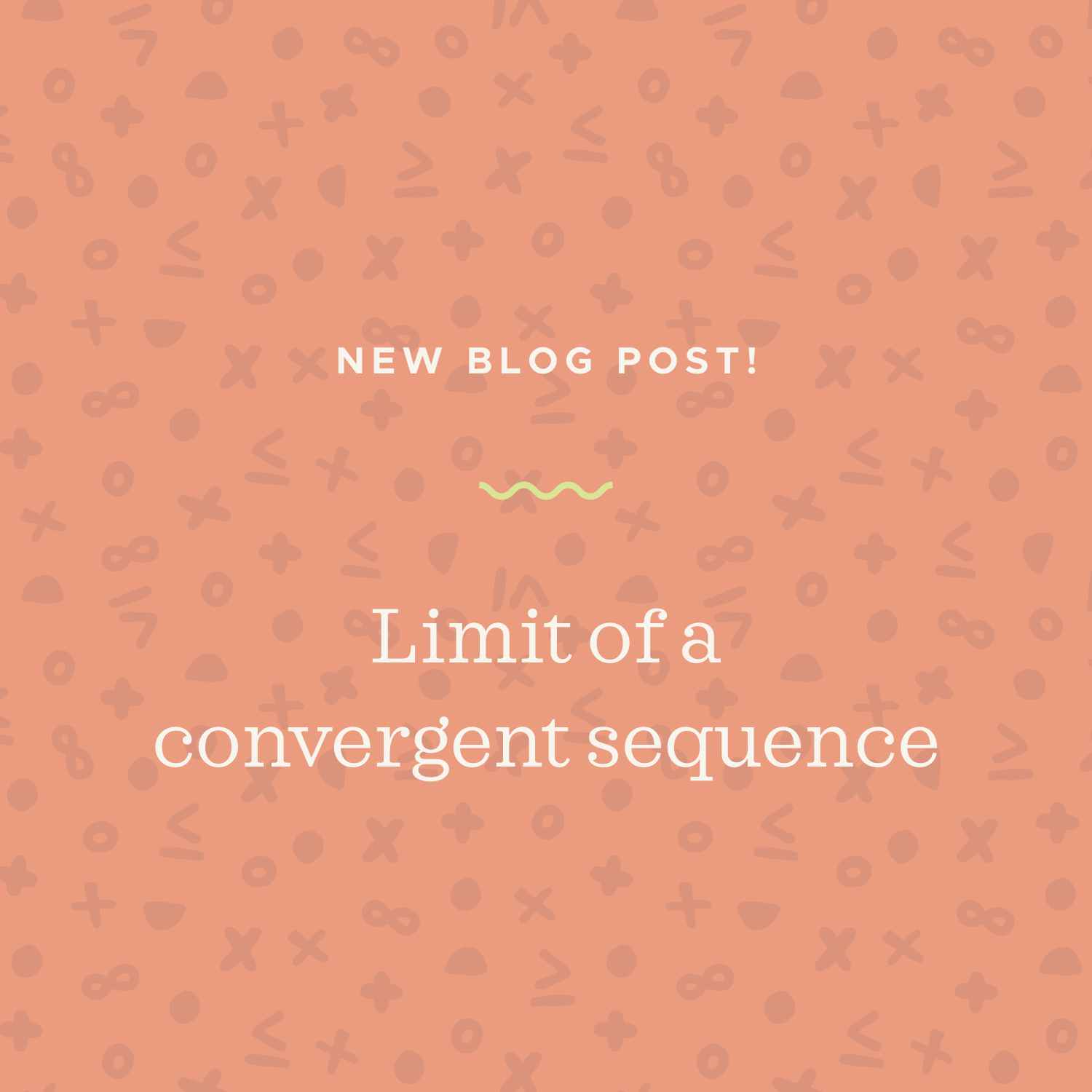Finding the limit of a convergent sequence
What is a convergent sequence?
Remember that a sequence is convergent if its limit exists as ???n\to\infty???.
So it makes sense that once we know that a sequence is convergent, we should be able to evaluate the limit as ???n\to\infty??? and get a real-number answer.
Hi! I'm krista.
I create online courses to help you rock your math class. Read more.
The way that we simplify and evaluate the limit will depend on the kind of functions we have in our sequence (trigonometric, exponential, etc.), but we know that the limit as ???n\to\infty??? exists.
How to find the limit of a convergent sequence
Take the course
Want to learn more about Calculus 2? I have a step-by-step course for that. :)
Finding the limit of the sequence when we already know the sequence converges
Example
Find the limit of the convergent sequence.
???a_n=\ln{\left(4n^3+3\right)}-\ln{\left(3n^3-5\right)}???
We’ve been told the sequence converges, so we already know that the limit will exist as ???n\to\infty???.
???\lim_{n\to\infty}a_n=\lim_{n\to\infty}\ln{\left(4n^3+3\right)}-\ln{\left(3n^3-5\right)}???
If we remember our laws of logarithms, we know that
???\ln{a}-\ln{b}=\ln{\frac{a}{b}}???
so we can simplify the limit to
???\lim_{n\to\infty}\ln{\left(4n^3+3\right)}-\ln{\left(3n^3-5\right)}=\lim_{n\to\infty}\ln{\left(\frac{4n^3+3}{3n^3-5}\right)}???
The way that we simplify and evaluate the limit will depend on the kind of functions we have in our sequence (trigonometric, exponential, etc.), but we know that the limit as n approaches infinity exists.
We’ll divide each term in our rational function by the variable of the highest degree, ???n^3???.
???\lim_{n\to\infty}\ln{\left(4n^3+3\right)}-\ln{\left(3n^3-5\right)}=\lim_{n\to\infty}\ln{\left(\frac{\frac{4n^3}{n^3}+\frac{3}{n^3}}{\frac{3n^3}{n^3}-\frac{5}{n^3}}\right)}???
???\lim_{n\to\infty}\ln{\left(4n^3+3\right)}-\ln{\left(3n^3-5\right)}=\lim_{n\to\infty}\ln{\left(\frac{4+\frac{3}{n^3}}{3-\frac{5}{n^3}}\right)}???
Now we will evaluate the limit.
???\lim_{n\to\infty}\ln{\left(4n^3+3\right)}-\ln{\left(3n^3-5\right)}=\ln{\left(\frac{4+\frac{3}{\infty}}{3-\frac{5}{\infty}}\right)}???
We know that any fraction that has a constant in the numerator and an infinitely large denominator will approach ???0???, so
???\lim_{n\to\infty}\ln{\left(4n^3+3\right)}-\ln{\left(3n^3-5\right)}=\ln{\left(\frac{4+0}{3-0}\right)}???
???\lim_{n\to\infty}\ln{\left(4n^3+3\right)}-\ln{\left(3n^3-5\right)}=\ln{\frac43}???
The limit of the convergent sequence ???a_n=\ln{\left(4n^3+3\right)}-\ln{\left(3n^3-5\right)}??? is ???\ln{\frac43}???.






